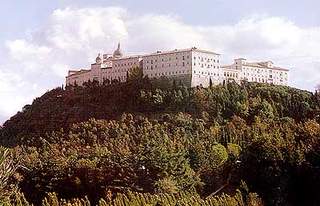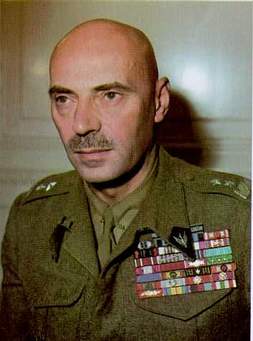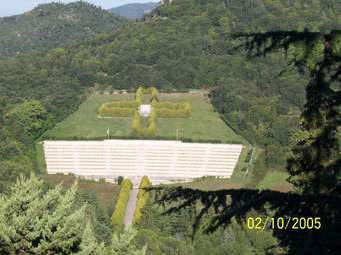'Santa's village' desecrates Monte Cassino battlefield

ROME – Environmental groups and the Polish Embassy are up in arms after Church authorities allowed the construction of a gawdy ”Father Christmas Village” next to the hallowed Polish military cemetery 120 km south of Rome where 1,052 soldiers from Gen. Wladislaw Anders' Polish Corps who died in the battle of Monte Cassino are buried together with their commander.
The area on a plateau near the ruins of Santa Maria dell'Albaneta just 1 km below the imposing Monte Cassino monastery, has been bulldozed to create space for market stalls, sausage salesmen and an archery competition, with entry to the public charged for prices of 3-6 euros, local environmentalists from the Fare Verde Onlus group say in a formal denunciation to magistrates in Cassino. The area was conceded under a lease by the Abbot of the monastery, Dom to a local businessman who opened the ”mercato di Babbo Natale,” chopped down a number of trees and erected fairy lights and loudspeakers blaring muzak.
New gravel paths have been created in the surrounding forest where remains of Allied and German servicemen still are found periodically and it is feared there are still unexploded mines and shells.
In addition to the dramatic Polish cemetery with its famous motif of those Poles who died in the final assault climaxing the battle ”For your freedom and ours,” thousands of American, British, New Zealand, Indian and Nepalese soldiers are buried nearby.
Access to some of the war monuments in the area such as a Polish army tank now has been denied to visitors as the village organisers have blocked an approach road with a metal gate.
”It is as if somebody were to set up market stalls on Omaha Beach in Normandy,” said Nando Tasciotti, a journalist who wrote a recent book about the history of the battle. In July a special 4 km long battlefield trail was inaugurated to allow military buffs and relatives of the fallen to access the site of the epic struggle.
The original 11th century Santa maria dell'Albaneta building was an annexe to the main monastery where St Thomas Aquinas studied as a boy and St Ignatius Loyola, founder of the Jesuits, stayed.
The plateau was a heavily fortified strongpoint for German troops during the battle and the scene of fierce fighting when Allied tanks arrived March 19, 1944.
Fare Verde Onlus and the local Cassino Battle Association want the battlefield area to be declared a protected world heritage area by Unesco to prevent further sacrilege of the poppies of Monte Cassino.
Cassino Mayor Giuseppe Petrarcone said he was ”stupified” that the town council had not been consulted about the market and sent local police officers and council technical experts to inspect the site. Two structures built without permission were sealed up but the inauguration of the so-called village went ahead on Tuesday.
The uproar follows a scandal earlier this year that led to the resignation of the previous Abbot of the monastery, Pietro Vigorelli, who was accused of bilking 500,000 euros of charitable funds and using them to enjoy lavish shopping trips outside Italy.
jp-ms




